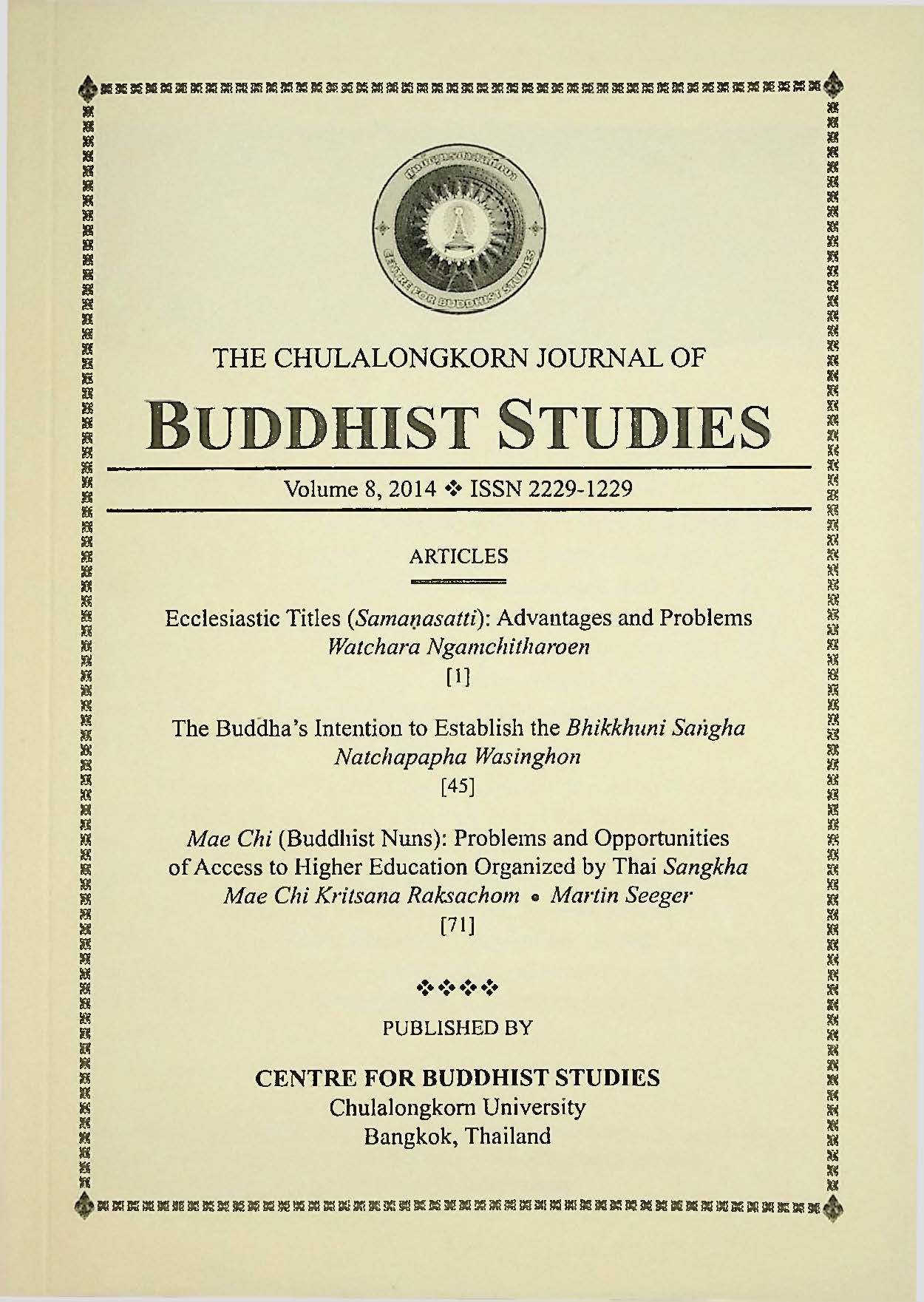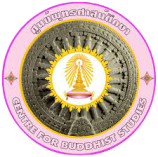The Buddha’s Intention to Establish the Bhikkhuni Sangha
Abstract
One of the significant factors that give rise to the conflict on Bhikkhuni ordination in present-day Thai society is the different beliefs and understanding about the Buddha’s real intention to establish the Bhikkhuni Sangha in Buddhism, both among its opponents and advocates. Those who oppose to the ordination often maintain that the Buddha did not really intend to ordain Bhikkhuni in the first place. Their presence in the Buddha’s lifetime was due to certain circumstances or external factors that eventually led the Buddha to pennit their ordination. The advocates, on the other hand, generally insist that it was the Buddha’s real intention to establish Bhikkhuni Sangha in the religion in the same way as he did the Bhikkhu counterpart. Such divergence of views is not simply a matter of religious principles that legitimately demand proper investigation, but it also affects how the Bhikkhuni issue will be resolved. If society docs not regard Bhikkhuni as something that the Buddha intended to establish, devout Buddhists may not want to sec the Bhikkhuni ordination revived. Naturally, the intention of the founder carries a significant weight in considering whether or not Bhikkhuni ordination should exist. On the other hand, if society believes otherwise, the attitude towards the issue may be different. Therefore, for the sake of academic clarity and fairness to all parties concerned, it is important to arrive at a clear perspective on the matter, especially regarding the Buddha’s intention.
References
Lecturers of Mahachulalongkomrajavidyalaya University. (2007). Prawit Phra Buddhasasana. Bangkok: Mahachulalongkomrajavidyalaya University.
Chatsuman Kabilasing. (1992). Kansueksa Rueang Phuying, Bangkok: Thammasat University Press.
Chatsuman Kabilasing. (1999). Phaplak khong Satri Hindu: Manvadharmasastra. Warasan India Sueksa 4 (14-22).
Jairat Udomsree. (2002). Patikiriya khong Sathaban Sasana to Seriphap lac Khwamsamoephak phaitai Ratthathammanun Pho So 2540: Sueksa Korani Kan Hai Satree Ok Buat nai Phra Buddhasasana. M.A Thesis in Politics: Chulalongkorn University
Prcecha Changkhwanyuen. (1999). Khwam Toktam khong Satri India Boran. Warasan India Sueksa. 4(23-31)
Mahachulalongkomrajavidyalaya University. (1996). Thai Tipitaka. Bangkok: Mahachulalongkomrajavidyalaya Buddhist University Press.
Manop Nakkanrian. (2002). Phra Buddhasasana kap Satri Sueksa. Bangkok: Mahachulalongkomrajavidyalaya University Press.
Maejee Kritsana Raksachom. (2007). Kan Sueksa Rueang Kan Sueam Sun khong Phiksuni Song nai Phra Buddhasasana Theravad. Ph.D. Dissertation in Buddhist Studies: Graduate School Mahachulalongkomrajavidyalaya University.
Montree Suebduang. (2008). Naew Phinit Choeng Satri Niyom Waduai Phuying kap Phra Buddhasasana Theravad nai Prathetthai. Ph.D. Dissertation in Buddhist Studies: Graduate School Mahachulalongkomrajavidyalaya University.
Suwimon Prakopwaithayakit: (1978). Satri nai Wannnakhadi Sansakrit. M.A. Thesis in Pali-Sanskrit. Bangkok: Graduate School, Chulalongkorn University.
Watsana Ai-rarat. (1979). Sitthi lae Nathi khong Satri nai Wannakam Sansakrit Thiwaduai Dharmasastra. M.A. Thesis in Pali-Sanskrit. Bangkok: Graduate School, Chulalongkorn University.







